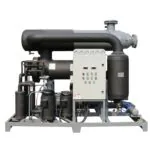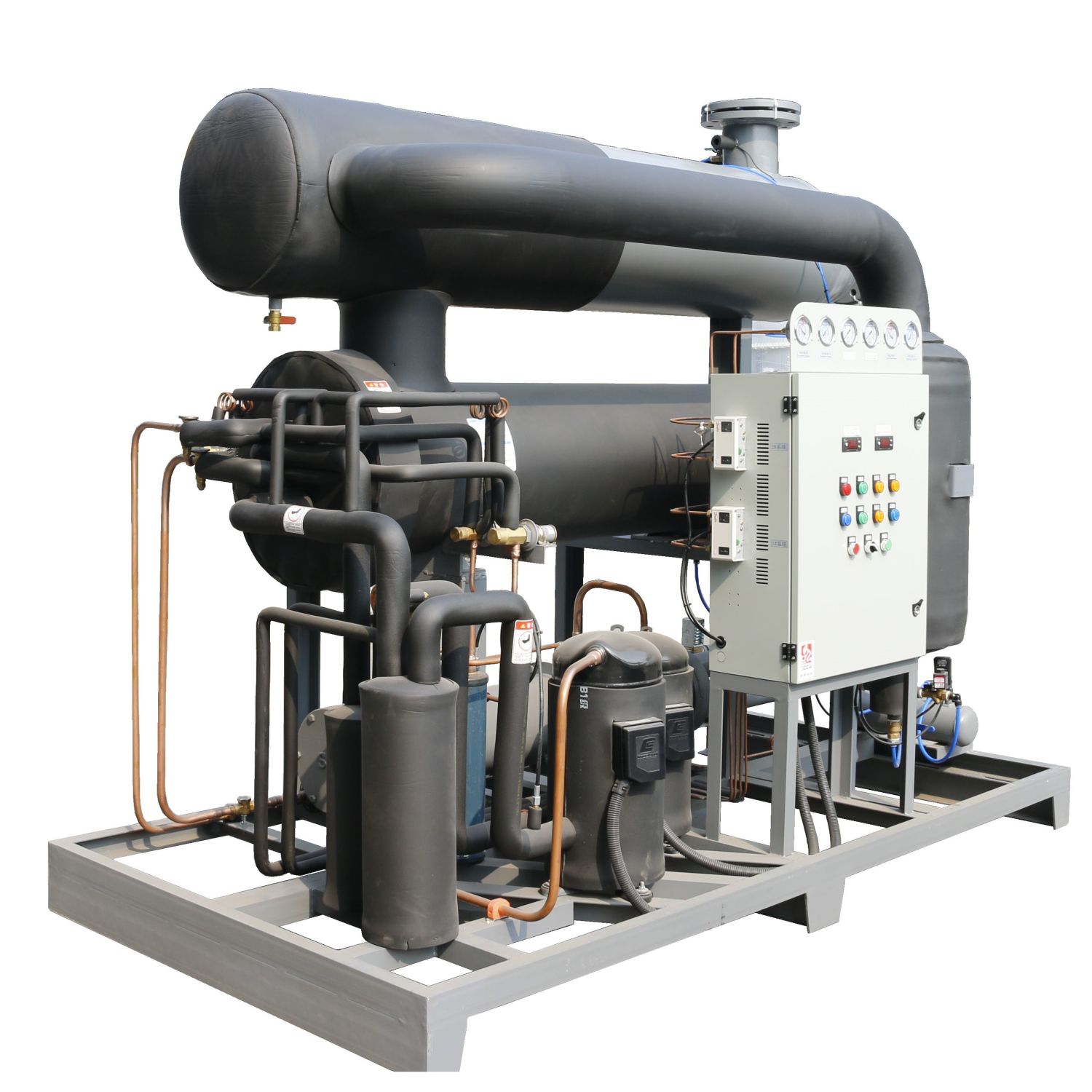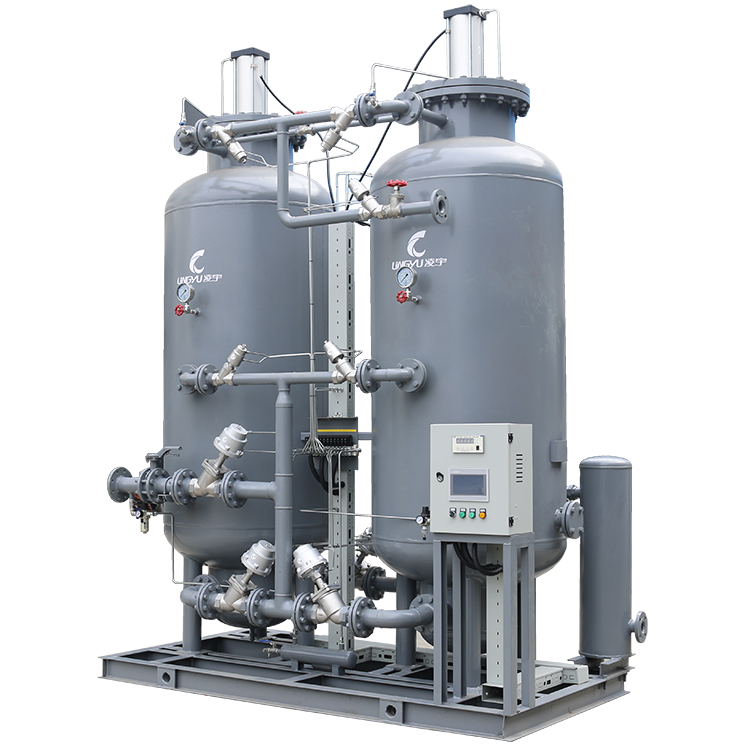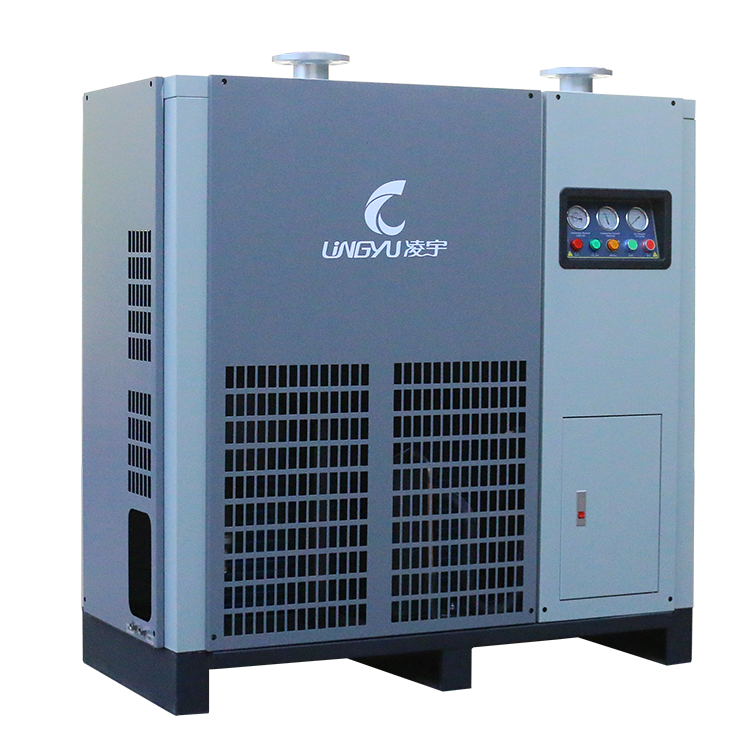In large-scale industrial operations, maintaining dry and clean compressed air is crucial to protect machinery, ensure product quality, and reduce downtime. The 3885 CFM water-cooled refrigerated air dryer provides a reliable and efficient solution for high-capacity applications where stable air quality is critical.
This article offers a deeper look into how this dryer works, what technical advantages it provides, and what professional users should know before installation and operation.
How a Water-Cooled Refrigerated Air Dryer Works
A refrigerated air dryer removes moisture by cooling compressed air to a point where water vapor condenses into liquid form. The condensate is then separated and automatically drained, leaving only dry, clean air to continue through the system.
In a water-cooled design, the refrigeration system transfers heat to a water circuit rather than ambient air. This method allows for greater temperature control, especially in facilities exposed to high environmental temperatures or limited ventilation. The result is stable dew point performance and efficient operation, even under continuous heavy loads.
Technical Benefits and Performance Factors
1. Temperature Stability in Harsh Environments
Water-cooled dryers perform consistently even when ambient temperatures exceed 40°C. Because they rely on cooling water rather than airflow, their efficiency is unaffected by poor ventilation or hot industrial surroundings — a major advantage over air-cooled units.
2. Lower Energy Consumption
Water has a much higher heat transfer coefficient than air, which means it removes heat more effectively from the refrigeration cycle. As a result, the compressor and condenser require less energy, reducing power consumption and extending the system’s operational lifespan. Over time, this translates into noticeable energy savings for plants running 24/7.
3. Flexible System Integration
The 3885 CFM model supports operating pressures up to 10 bar, making it suitable for integration with most industrial compressed air systems. Customizable options — including voltage, refrigerant type, and connection sizes — allow seamless adaptation to regional standards or specific plant requirements.
4. Improved Air Quality and Product Protection
By maintaining a stable pressure dew point between 2°C and 10°C, the dryer ensures consistent moisture removal. This protects pneumatic tools, valves, and production lines from water-related damage, contamination, and corrosion — especially in sectors like pharmaceuticals, food processing, and precision engineering.
5. Ease of Operation and Monitoring
An advanced microprocessor control system allows users to track performance data in real time, including temperature, pressure, and dew point. Automatic alarms and fault diagnostics provide quick feedback for maintenance teams, helping prevent unexpected shutdowns and ensuring continuous system reliability.
Practical Installation and Maintenance Advice
To achieve the best results, users should follow these technical recommendations:
Cooling Water Quality: Ensure the cooling water is clean and treated to prevent scaling and internal corrosion.
Installation Environment: Install the dryer in a dust-free, well-ventilated indoor location with easy access for inspection.
Filter Configuration: Use both pre-filters and after-filters to prevent contamination and extend dryer lifespan.
Drain System Checks: Inspect automatic drain valves regularly to confirm proper condensate discharge.
Capacity Sizing: Choose a model rated 10–20% higher than the system’s maximum air demand for optimal performance.
Where the 3885 CFM Dryer Excels
This dryer is particularly effective in:
High-Temperature Facilities: Ideal for tropical regions or enclosed workshops.
Continuous-Operation Plants: Such as petrochemical, steel, or textile industries.
Precision Manufacturing: Protects sensitive tools and processes from moisture.
Centralized Air Systems: Suitable for supplying multiple production lines.
Key Technical Insights for Buyers
When planning a system that includes the 3885 CFM water-cooled refrigerated air dryer, consider the following:
Cooling Water Temperature: The lower the inlet water temperature (ideally below 32°C), the better the efficiency.
Ambient Conditions: Avoid environments with excessive dust or oil mist to protect heat exchangers.
Maintenance Access: Leave sufficient clearance on all sides of the dryer for safe servicing.
Redundancy Options: In critical applications, dual-dryer systems can ensure uninterrupted air supply during maintenance.
Expert Conclusion
From a technical standpoint, the 3885 CFM water-cooled refrigerated air dryer delivers high thermal efficiency, consistent moisture control, and reliable performance for heavy-duty industrial systems. Its advanced design minimizes energy consumption and maintenance effort while maximizing air quality and system stability.
For industries that demand continuous, large-volume air drying — especially under challenging temperature conditions — this model offers a durable and cost-effective solution.
For more product information

The 3885 CFM refrigerated air dryer (water cooled) is a high-capacity industrial solution designed for removing moisture from large-scale compressed air systems. Built for continuous and demanding operation, this water-cooled unit ensures a steady dew point and maximum system protection. Whether you're operating in petrochemical, steel, manufacturing, or pharmaceutical industries, the 3885 CFM refrigerated air dryer delivers superior drying performance and energy efficiency.








